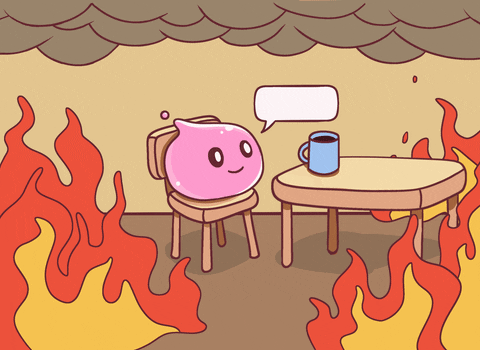Design thinking in the Age of AI
AI is transforming how we live, work, and communicate. With AI’s help, we can move from idea to product launch at super-speed. Never before have we been able to move
▪ September 26, 2025▪ August 22, 2025
In product design, few phrases are as common, or as unhelpful, as “it needs more visual polish.” You’ve heard it in critiques, design reviews, Slack threads, and launch meetings. Everyone on the team uses the phrase: designers, product managers, engineers, and marketing teams alike. But despite its ubiquity, the phrase rarely leads to action.
Why? Because “visual polish” is a placeholder. It signals dissatisfaction without clarity. It masquerades as feedback but lacks the substance to drive meaningful improvements. Worse, it creates a false sense of alignment. Everyone nods when it’s said–but each person imagines something different.

The collective nod isn’t a language problem. It’s a team alignment problem. And it’s one that design-driven businesses need to address head-on.
Let’s break it down. When someone on your team says, “I think this screen just needs visual polish,” what are they actually saying? On a cross-functional team, everyone is going to interpret this differently.
All of these interpretations are valid. But they are radically different kinds of work, requiring different tools, processes, and expertise. Yet, “visual polish” becomes the catch-all phrase because it feels safe.
Worse, it signals that something’s off, without naming what’s missing or who’s responsible. It slows teams down, frustrates designers, and distracts everyone from the real product problems they’re trying to solve.

This is where chaos creeps in!
One vague comment, four different interpretations, and no clear path forward. What sounds like a small request–”I think this screen just needs visual polish”-becomes a slow bleed of time, trust, and momentum. Here’s what actually happens when feedback lacks precision:
So confusion reigns, and the team gets demoralized. It might seem like a communication issue, but really, it’s a domain knowledge gap.
When people lack the language to describe what they’re seeing, they often resort to vague shorthand, such as “visual polish”. It’s not intentional. It’s just the limit of their design vocabulary.
One reason “visual polish” gets overused is that not everyone has the training to talk about visual design in specific terms. That’s not a knock on anyone– it’s just the reality of cross-functional teams.
Visual design is a discipline. Like writing code or shaping product strategy, it comes with its own vocabulary, principles, and skill sets. If you haven’t studied it deeply, you might know something looks off—but not know why.
This is especially true for people in product and engineering roles. They’re experts in their own domains. They’re good at spotting problems, but they don’t always have the language to describe them visually.
So they fall back on, “make it more polished.”
Even within design, interpretations vary. A visual designer, a UX designer, and a brand designer may all interpret “polish” differently based on their training and experience.
This is why design feedback needs to be anchored in shared language and clear criteria—not vibes.
If we want to improve how we work together, we need to get better at giving, requesting, and interpreting feedback. Here are four ways to replace vague “visual polish” comments with something more actionable.
Zoom in on the problem area. Instead of saying, “We need to apply visual polish in the next round,” identify what is off.
Zooming in focuses attention and gives designers a place to start.
Describe the effect, not just the symptom. Even if you can’t pinpoint the design flaw, describe what it feels like to use it.
These comments are actionable because they connect design decisions to user experience.
Use objective design language. If you have the vocabulary to be specific, don’t be afraid to use it.
Even if you’re not a designer, learning a little visual design language can go a long way in improving feedback and collaboration.
Ask for specific feedback in return. Designers can also lead here. Instead of asking generically, “What do you think?”, try the following:
Prompting for specific critique will train stakeholders to give more useful input— and reinforce that “polish” is not a gut feeling or opinion.
Defining what a good critique means is only half the “visual polish” battle. There’s another trap lurking, and that’s knowing when to stop. Without a shared definition of “done,” teams risk endless cycles of “visual polish.”
Without a finish line, “polish” drags on forever—one more round, one more tweak, one more final review before delivery. Should that gray be lighter? Or slightly darker?
The fix to this is straightforward. As a team, agree on what “done” looks like visually. That doesn’t mean obsessing over kerning or writing a hundred detailed guidelines. Just define a few clear guidelines that eliminate ambiguity and align with your product’s experience principles.
Here’s a starting point:
These aren’t just checkboxes. They are your exit criteria. Once met, the work is ready for engineering- no debate. No last-minute “can we polish this once more?”
When “done” is codified, polish stops being subjective. It becomes objective, measurable, and handoff-ready- so teams can ship with confidence instead of circling endlessly.
Saying “it needs visual polish” might feel harmless, but it’s a subtle blocker. It hides honest feedback behind a fuzzy phrase. It wastes design effort and slows down meaningful product improvement. And, it creates misalignment across roles.
Let’s call it what it is: a placeholder. A cue to dig deeper. A sign that we need to sharpen our language and our expectations. Good teams are built on clarity. Great teams are built on shared understanding.
If you want to design better digital products, start by killing vague feedback. Say what you mean. Define what “done” looks like. And leave “visual polish” behind.
AI is transforming how we live, work, and communicate. With AI’s help, we can move from idea to product launch at super-speed. Never before have we been able to move
▪ September 26, 2025Most progress dashboards in EdTech leave parents to interpret charts and scores on their own. Generative UI offers a more meaningful alternative by translating student data into clear, contextual narratives.
▪ July 7, 2025Integrating continuous customer feedback into your product design process takes work yet pays compounding rewards over time as your product offering evolves intuitively to deliver more and more value. Learn about 4 lightweight methods you can implement today.
▪ January 30, 2024